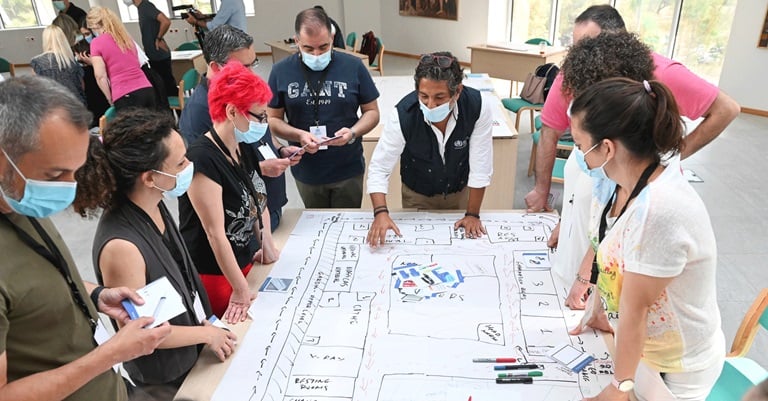

Compendium of WHO and other UN guidance on health and environment

Guidance on chemicals and health
- Chemical safety
- Chemical incidents
More than 160 million chemicals are known to humans. About 40 000 to 60 000 of them can be found in commerce; 6000 of these account for more than 99% of the total volume of chemicals in commerce globally. In 2017, the chemical industry was the second largest manufacturing industry in the world and the trend is going upwards – chemicals sales are projected to almost double from 2017 to 2030.
Chemicals, whether of natural origin or produced by human activities, are part of our environment. Manufactured chemicals include industrial and agricultural products such as pesticides, petroleum products and processed metals. Some chemicals are manufactured for specific uses, while others are unwanted by-products, including wastes, or products of combustion such as toxic gases and particles from industrial emissions and burning of fuel.
All people come in contact with chemicals as part of normal life – through the food and drinking-water they consume, the products they use or are surrounded by at home or the workplace, through the contact with the environment (e.g. through breathing air, touching the soil, and swimming in recreational waters) or as a result of a chemical incident. Many of the chemicals people use and are exposed to are harmless or even beneficial; others pose a threat and are hazardous to people’s health and the environment. Levels of exposure and resulting health impacts are determined by social as well as biological factors. Men, women and children are exposed to different kinds and levels of chemicals and are exposed with different frequency. In addition, men, women and children vary in their physiological susceptibility to health effects from exposure to hazardous chemicals.
Chemical safety

In 2019, a small number of chemicals for which data are available were estimated to cause 2 million deaths from a variety of health outcomes including poisonings, heart diseases, chronic respiratory diseases and cancers. Chemical pollution also negatively impacts a range of facets of the ecosystem, which can harm human health.
Some hazardous chemicals are of particular health concern because of their widespread presence in the environment, their toxicity and capacity to magnify and accumulate in environmental and human media, and the fact that many humans easily come in contact with them thereby harming the health of large populations. Chemicals or groups of chemicals of major public health concern include air pollution, arsenic, asbestos, benzene, cadmium, dioxin and dioxin-like substances, inadequate or excess fluoride, lead, mercury and highly hazardous pesticides (HHPs).
Chemical incidents

Chemical events arising from technological incidents, natural disasters, conflict and terrorism, polluted environments, and contaminated foods and products are common and occur worldwide. Between 2000 and 2020, there were over 1000 technological incidents involving chemicals worldwide, affecting over 1.85 million people.
Some chemical incidents can have international consequences, for example when a chemically contaminated product is distributed to multiple countries or when a chemical release contaminates an environmental medium such as air or water and subsequently traverses national borders. It then falls under the IHR (2005). Under IHR (2005), Member States must have in place the necessary capacities to detect, evaluate and respond to public health events caused by any hazard, including chemicals. WHO, in turn, should provide assistance on request to Member States for investigating and controlling such events.
Download the guidance on chemicals and health
Read more
Related health topics

